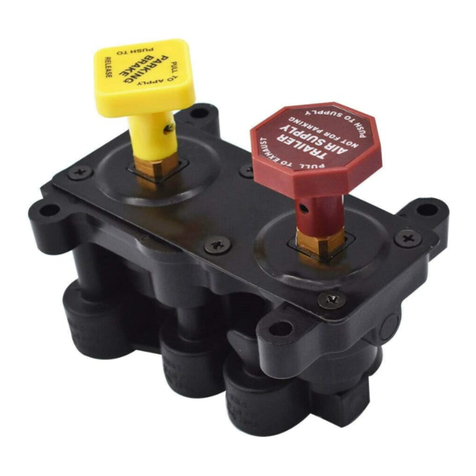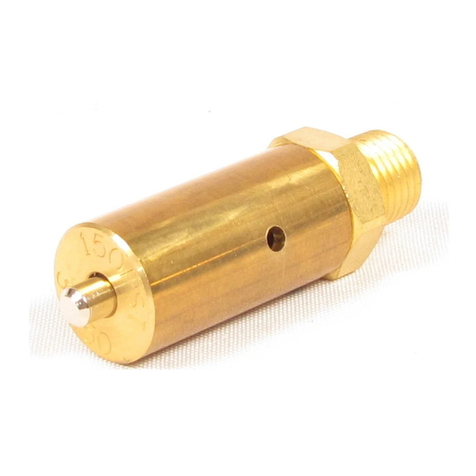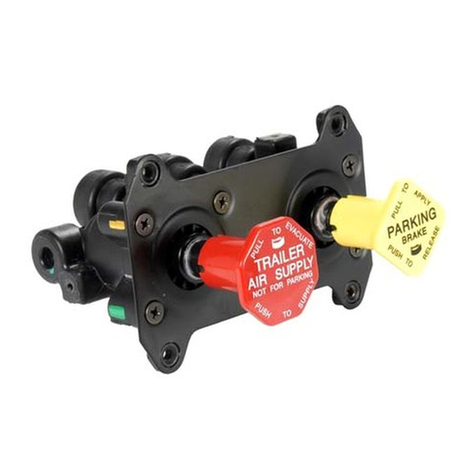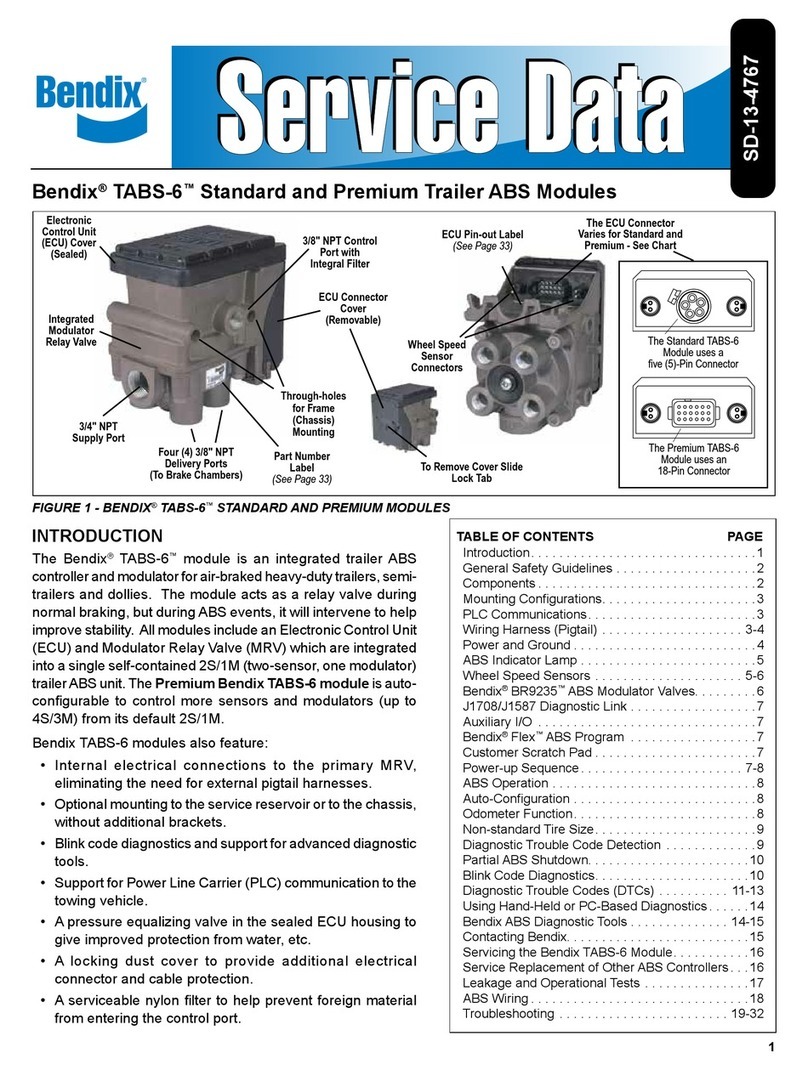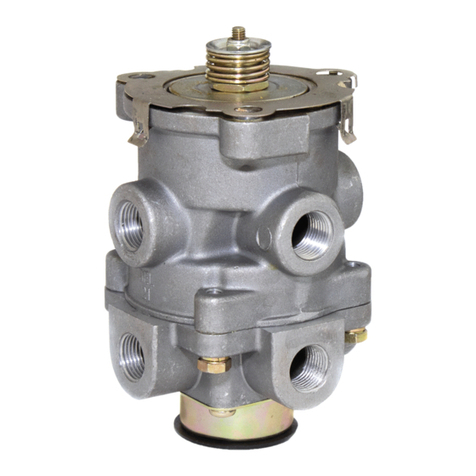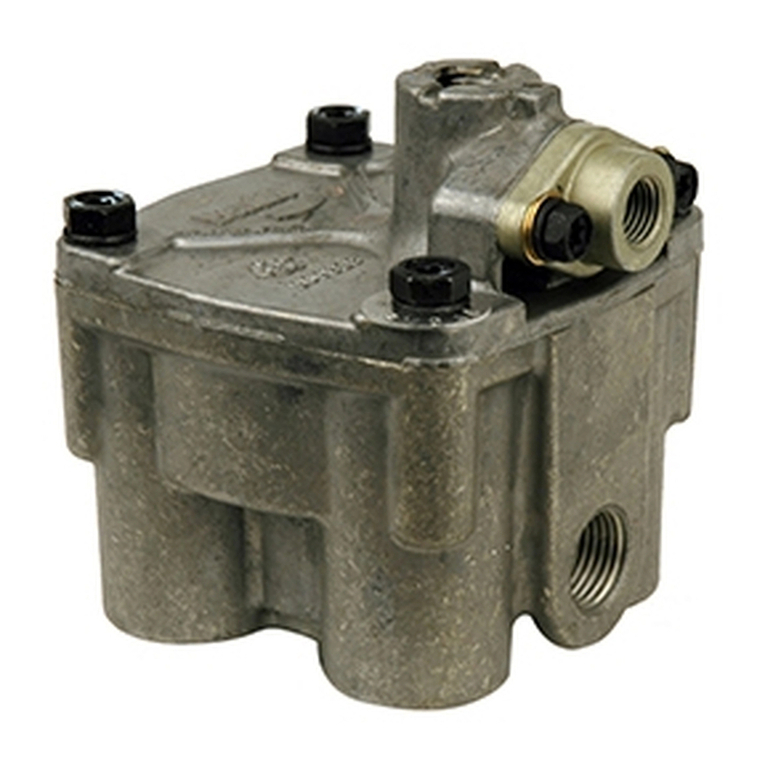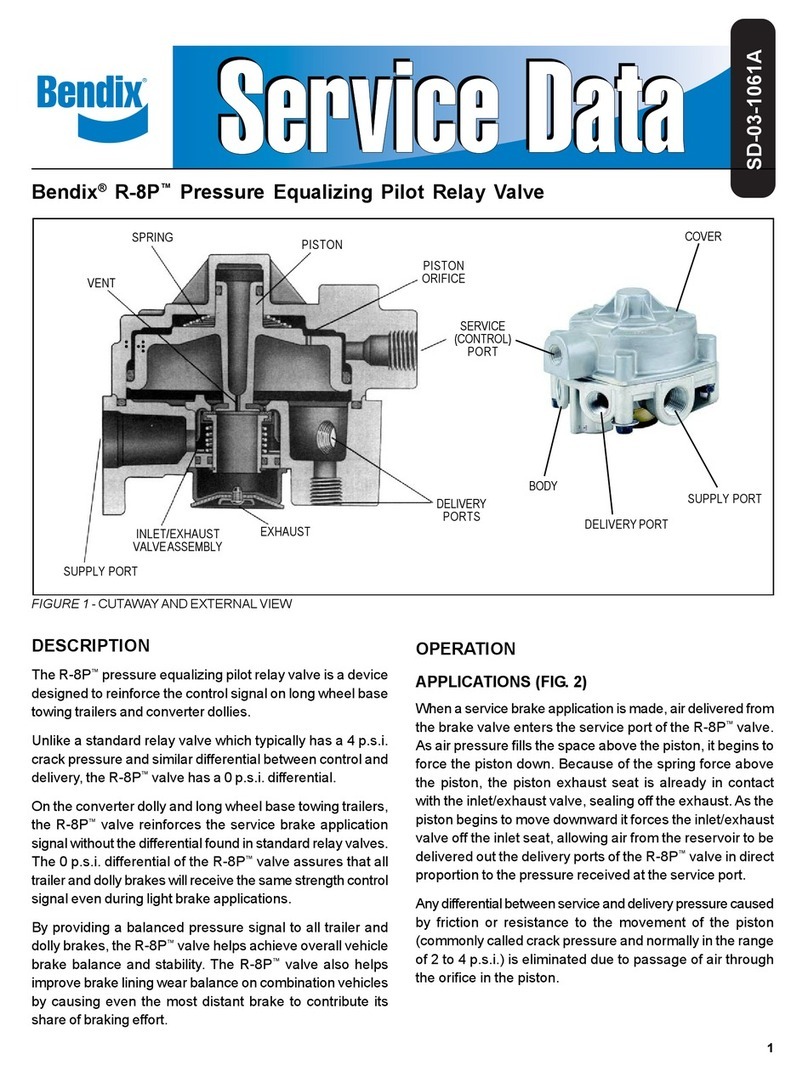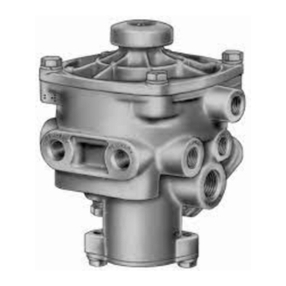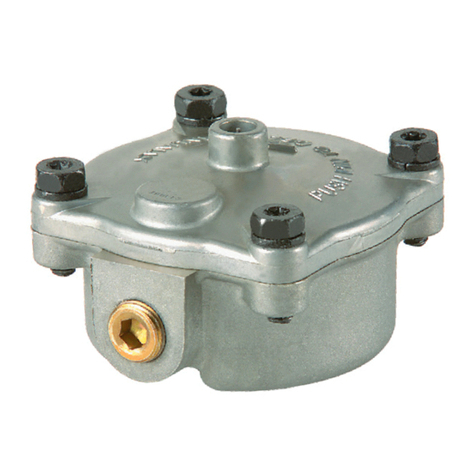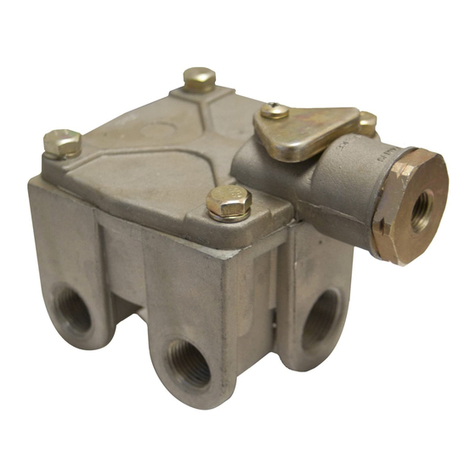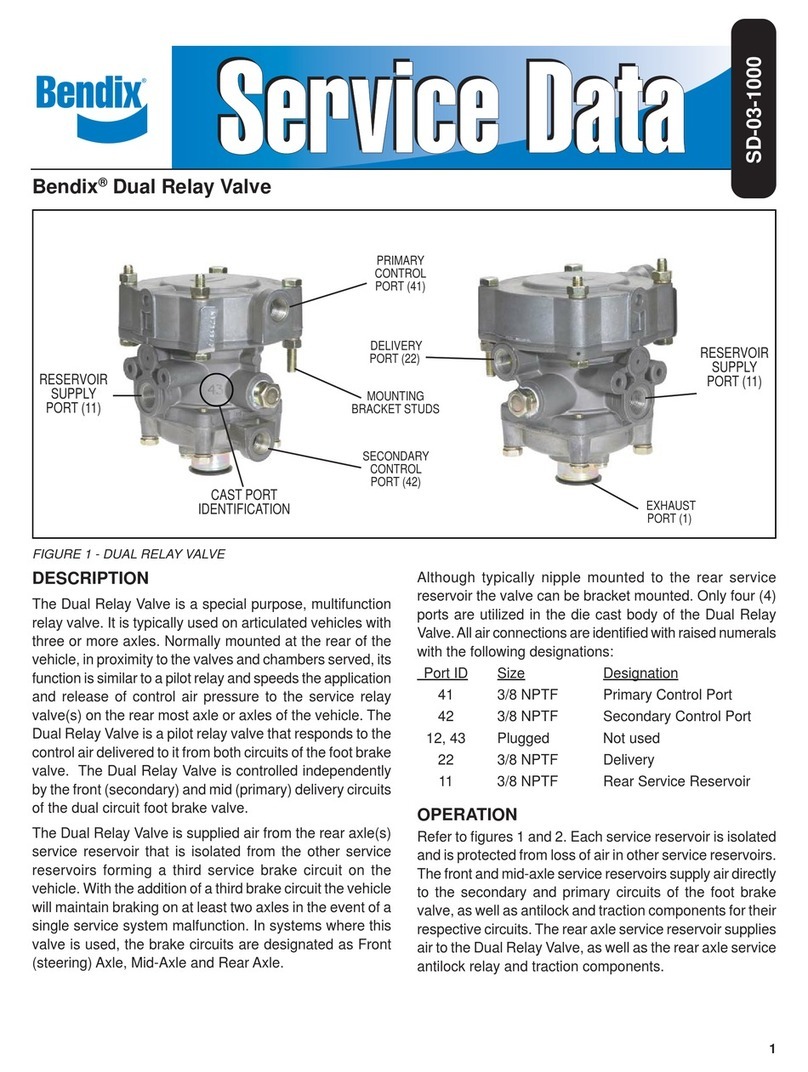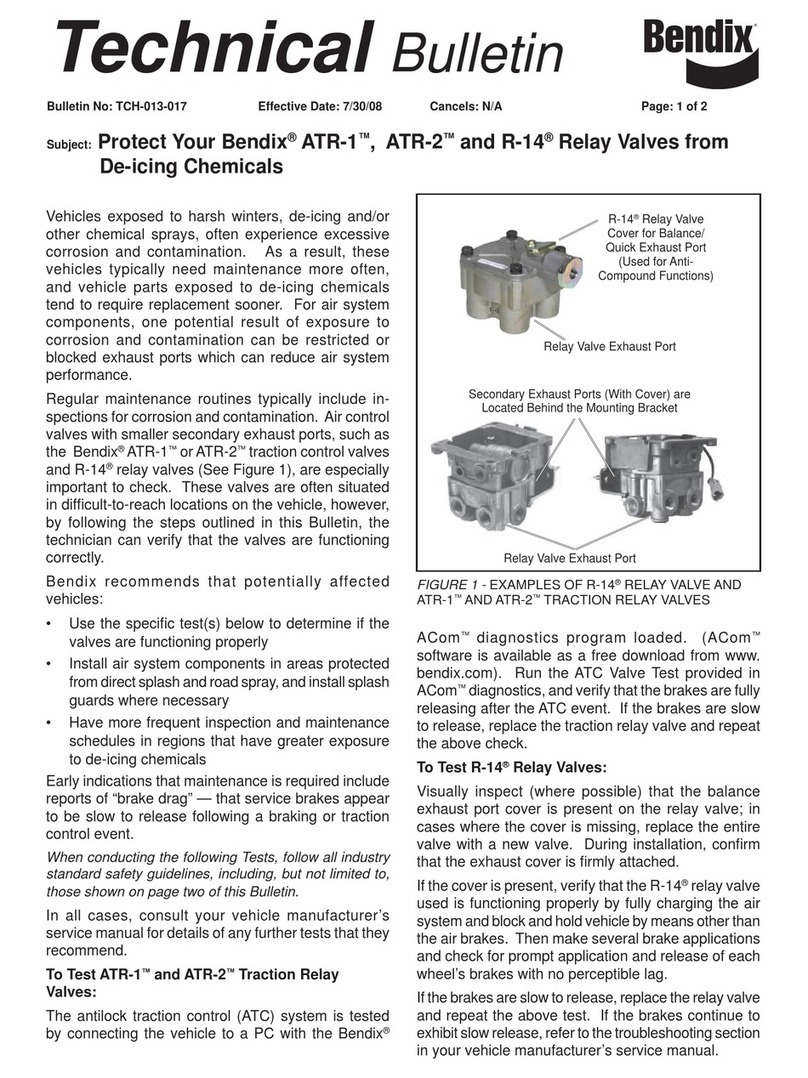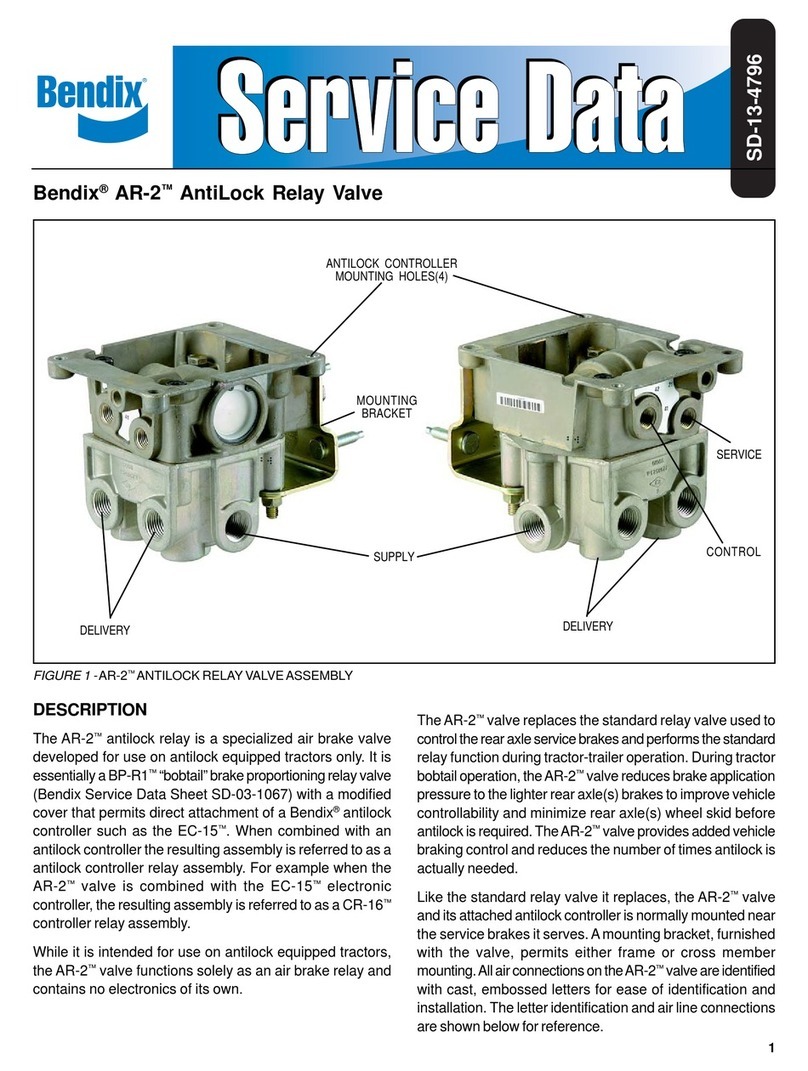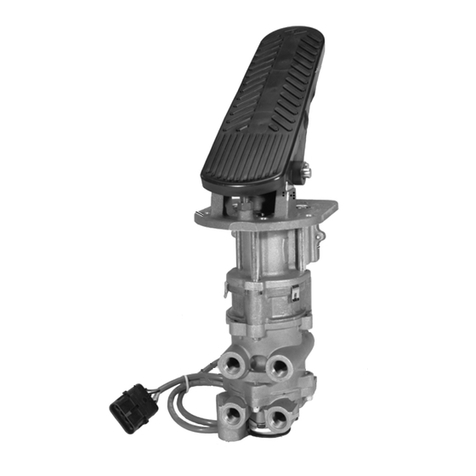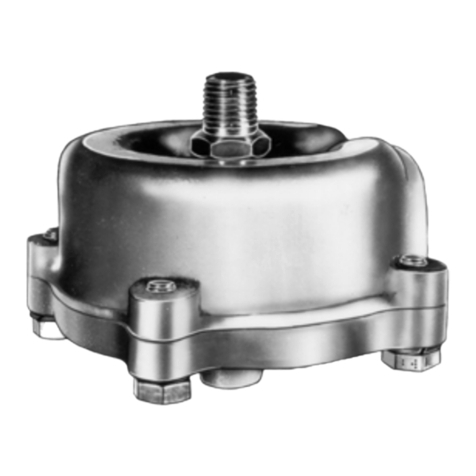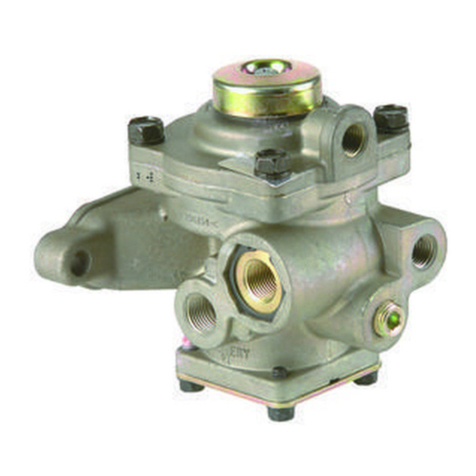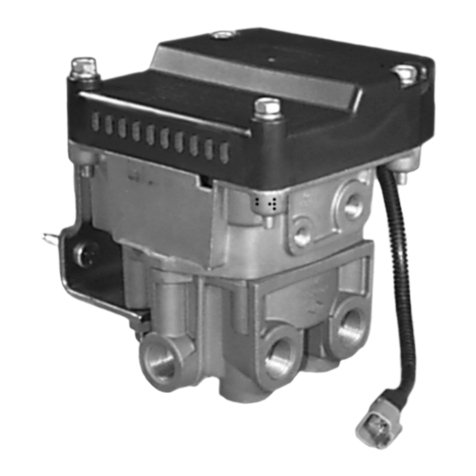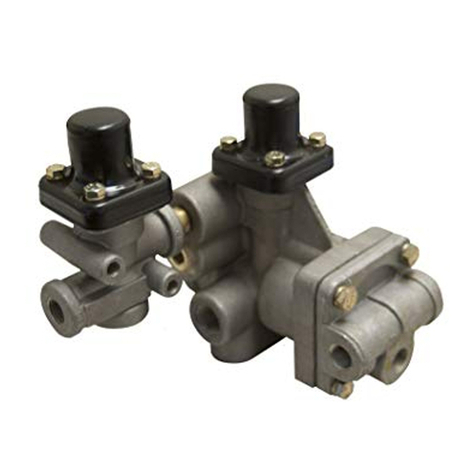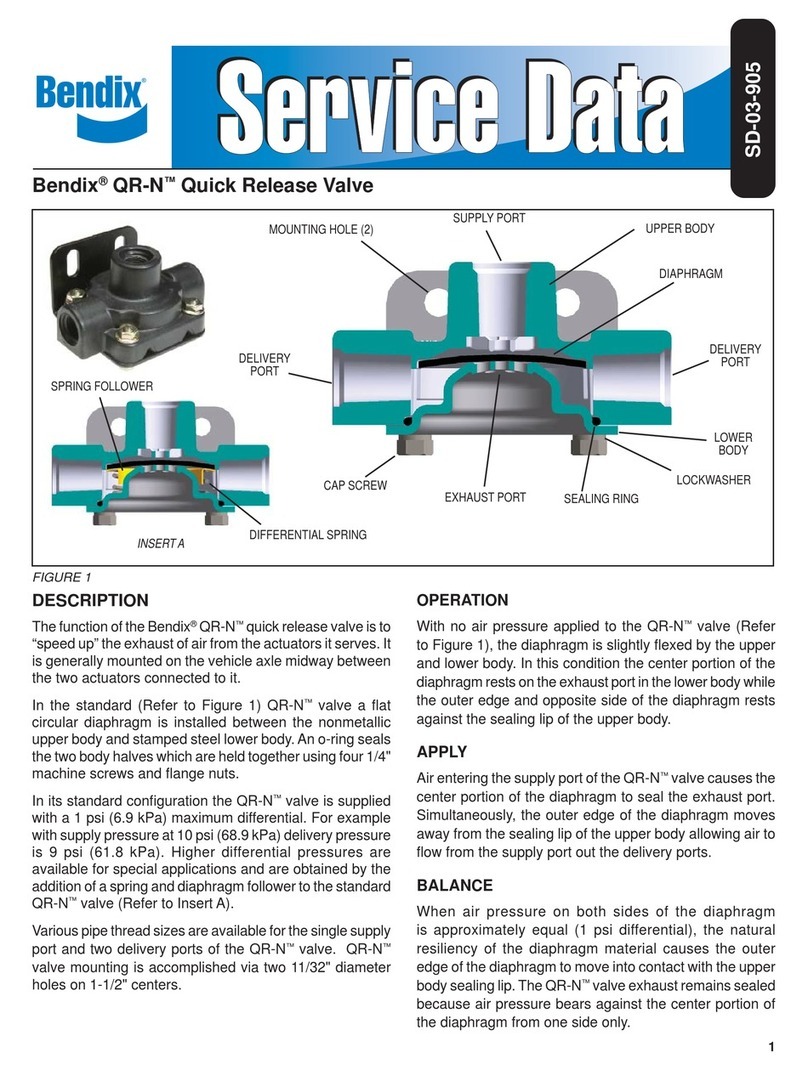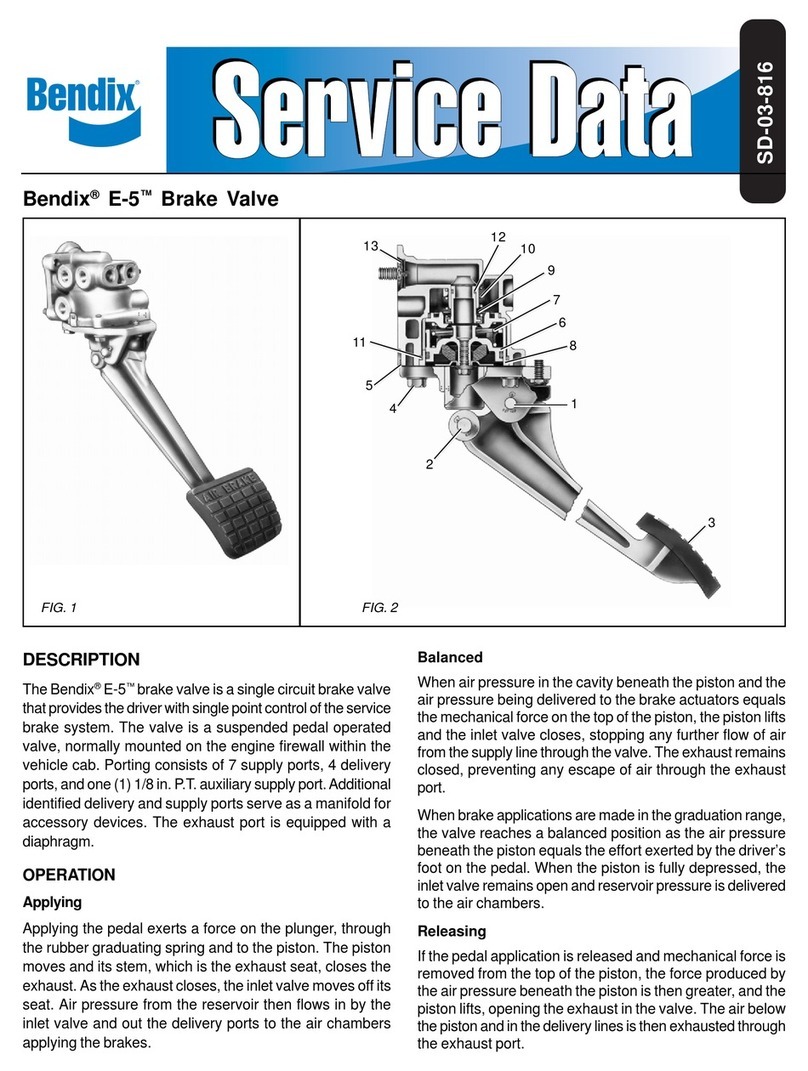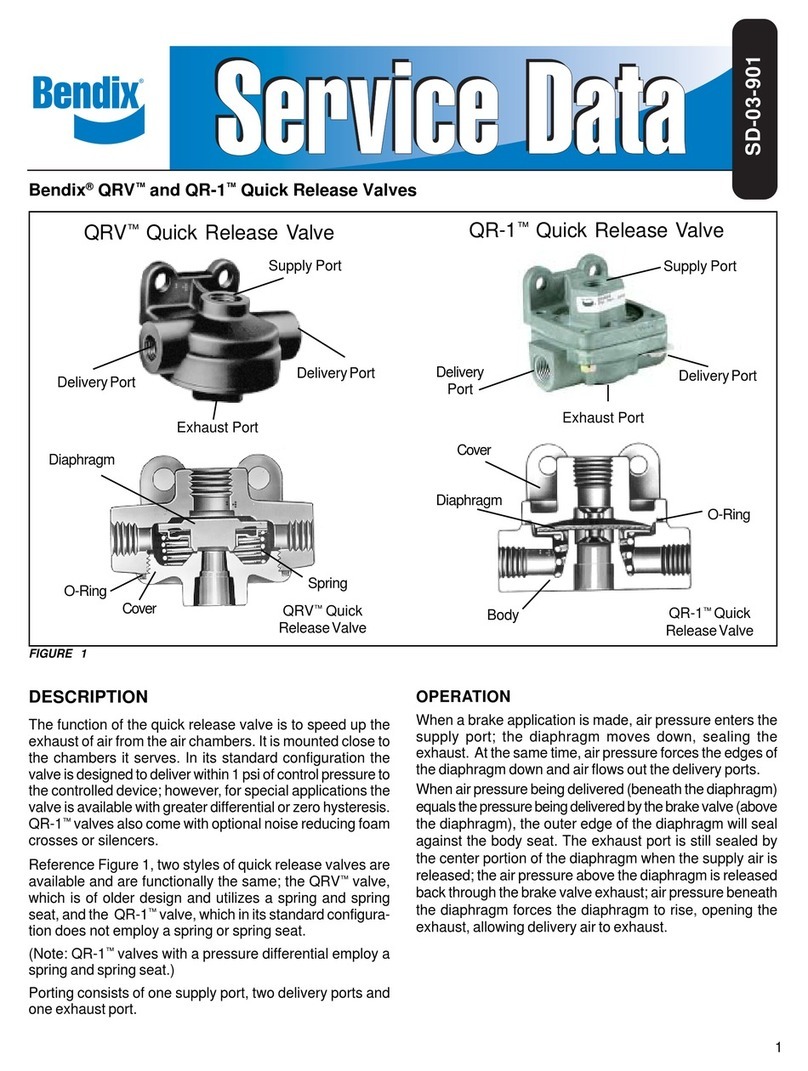
5
OPERATION & LEAKAGE CHECKS
GENERAL
A change in vehicle braking characteristics or a low pres-
surewarningmay indicateamalfunction in oneor the other
brake circuit, and although the vehicle air brake system
may continue to function, the vehicle should not be oper-
ateduntil thenecessary repairshave been made and both
braking circuits, including the pneumatic and mechanical
devices are operating normally. If the brake valve does
not functionas described above or leakage is excessive,
itisrecommendedthatit be replaced withaneworremanu-
factured unit available at Bendix outlets.Always check the
vehiclebrake systemfor properoperation after performing
brakeworkand before returningthe vehicle toservice.
OPERATING CHECK
Checkthedelivery pressure ofbothNo. 1 andNo.2 circuits
using test gauges known to be accurate.
Note: Thetreadleorpedal will notbeina“normal” released
positionuntilthe air brakesystemis pressurized. Thepedal
ortreadlewillrise to its normalreleasepositionas the brake
system is pressurized from 0 psi.
Depress the treadle to several positions between the fully
releasedandfullyappliedpositionsand check the delivered
pressureonthe test gauges toseethat it variesequallyand
proportionatelywith the movementof the brakepedal.
After a full application is released, the reading on the test
gauges should fall off to zero promptly. It should be noted
that the No. 1 circuit delivery pressure will be about 4 psi
greater than the No. 2 circuit delivery pressure with both
supply reservoirs at the same pressure. This in normal for
thisvalve.
LEAKAGE CHECK
Make and hold a pressure application of 20 psi.
Coat the exhaust port and body of the brake valve with a
soapsolution.
Leakage permitted is a 1" bubble in 3 seconds in both the
appliedand released positions.
WARNING! PLEASE READ AND FOLLOW
THESE INSTRUCTIONS TO AVOID
PERSONAL INJURYOR DEATH:
When working on or around a vehicle, the following
general precautions should be observed at all times.
1. Park the vehicle on a level surface, apply the
parking brakes, and always block the wheels.
Always wear safety glasses.
2. Stop the engine and remove ignition key when
working under or around the vehicle. When
working in the engine compartment, the engine
should be shut off and the ignition key should be
removed. Where circumstances require that the
enginebeinoperation,EXTREMECAUTIONshould
be used to prevent personal injury resulting from
contact with moving, rotating, leaking, heated or
electrically charged components.
3. Do not attempt to install, remove, disassemble or
assemble a component until you have read and
thoroughly understand the recommended
procedures. Useonly the proper tools and observe
all precautions pertaining to use of those tools.
4. If the work is being performed on the vehicle’s air
brake system, or any auxiliary pressurized air
systems,make certain to drain theairpressure from
all reservoirs before beginning ANY work on the
vehicle. If the vehicle is equipped with an AD-IS™
air dryer system or a dryer reservoir module, be
sure to drain the purge reservoir.
5. Following the vehicle manufacturer’s
recommendedprocedures,deactivatethe electrical
system in a manner that safely removes all
electrical power from the vehicle.
6. Never exceed manufacturer’s recommended
pressures.
7. Never connect or disconnect a hose or line
containing pressure; it may whip. Never remove a
component or plug unless you are certain all
system pressure has been depleted.
8. Use only genuine Bendix®replacement parts,
components and kits. Replacement hardware,
tubing, hose, fittings, etc. must be of equivalent
size, type and strength as original equipment and
be designed specifically for such applications and
systems.
9. Components with stripped threads or damaged
parts should be replaced rather than repaired. Do
not attempt repairs requiring machining or welding
unless specifically stated and approved by the
vehicle and component manufacturer.
10. Prior to returning the vehicle to service, make cer-
tain all components and systems are restored to
their proper operating condition.
VEHICLE PREPARATION
1. Parkthevehicleon a level surfaceandblockthe wheels
and/or hold the vehicle by means other than the air
brakes.
2. Draintheair pressure fromall vehicle reservoirs.
VALVE REMOVAL
1. Identify and mark or label all air lines and their respec-
tiveconnections onthe brake valve to facilitate ease of
installation. Disconnect all air lines.
2. Markthe relationship of the valve body to the mounting
plate then remove the valve from its mounting on the
vehicle.
